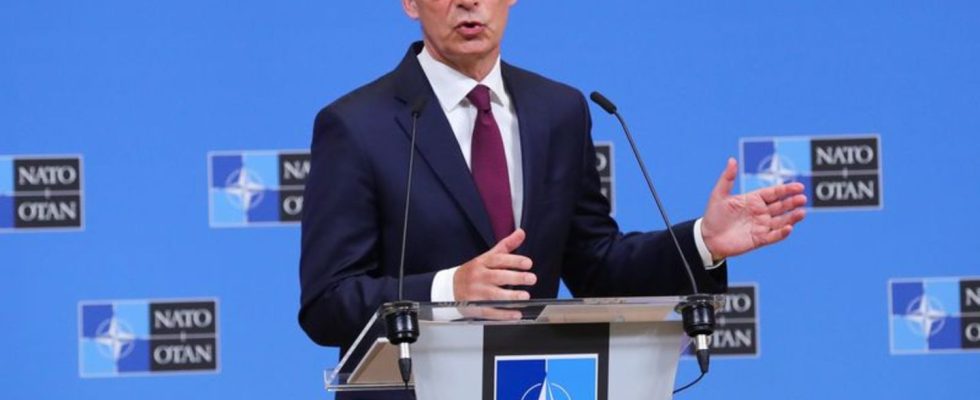defense
NATO countries agree on new defense spending
Jens Stoltenberg, NATO Secretary General, speaks during a press conference at NATO Headquarters. photo
© Zheng Huansong/XinHua/dpa
How much money does it take for effective deterrence and defense? This topic has long been debated in NATO. Shortly before the summit in Lithuania there is now a compromise.
The previous goal only stipulated that all allied states approach the benchmark of spending at least two percent of their GDP on defense by 2024. It was adopted at a summit in Wales in 2014.
The new two percent target is now to be included in the declaration of the NATO summit, which begins on Tuesday in the Lithuanian capital of Vilnius. The summit meeting will also deal with strengthening deterrence against Russia and continued support for Ukraine.
For Germany and almost 20 other NATO countries, the new target means that they will have to significantly increase their defense spending in the coming years. The Federal Republic recently increased its expenditure relevant to NATO by ten percent to around 64 billion euros. So far, however, the alliance has fallen far short of its target. According to current comparative figures, NATO estimates that Germany will achieve a quota of 1.57 percent this year.
What’s next?
With the help of a special fund for defense amounting to 100 billion euros, which was decided last year, the two percent quota is now to be reached in 2024. However, it is unclear how things will continue once the special fund has been used up. According to a study by the German Economic Institute (IW), the share of GDP could fall back to below two percent as early as 2026.
Most recently, the United States was the leader within NATO in terms of the relationship between economic power and defense spending. According to estimates published on Friday, they currently have a rate of 3.49 percent. With 860 billion US dollars (791 billion euros), Washington recently planned more than twice as much money for defense as all other alliance states combined.
In addition to the USA, according to the latest NATO estimates, only Great Britain, Finland, Greece, Hungary, Poland, Lithuania, Estonia, Latvia, Romania and Slovakia will reach the two percent target in 2023.
What does the GDP ratio say about performance?
In the discussion about the new target, the federal government had long tried to keep the specifications as vague as possible. It was argued that the GDP ratio says little about the performance of the armed forces and that NATO targets, for example for military capabilities and compliance with them, are much more important and meaningful. As evidence of this, it is stated that the rate does not fall if a country cuts its defense spending accordingly when economic output falls.
Most recently, however, the federal government at least agreed to set the two percent as the minimum target. Federal Chancellor Olaf Scholz (SPD) recently repeatedly emphasized publicly that Germany would permanently increase its defense spending to two percent of gross domestic product.
In the discussion about the new target, the Baltic countries and Poland in particular had spoken out in favor of a much more ambitious self-commitment. The Estonian Minister Hanno Pevkur recently called for a target of 2.5 percent.
The dispute over defense spending in NATO was particularly tough during the tenure of US President Donald Trump. He had accused European allies like Germany of being free riders because of their comparatively low spending and at times even threatened that the United States would leave the alliance.
Trump is also likely to rate the new two percent target as insufficient. According to diplomats, the states with low quotas so far have not committed themselves to spending at least two percent of GDP on defense from next year. In countries such as Canada, Spain, Luxembourg and Belgium, for example, it will still take several years to reach the target.

